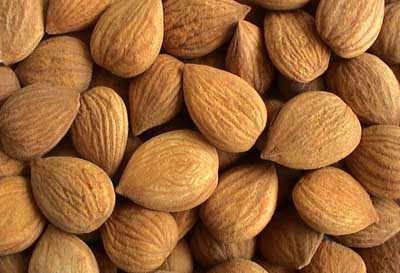杏仁
The Processing of 杏仁
Origin
The dry ripe seeds of the deciduous arbor plant Prunus armeniaca L. var. ansu Maxim, P. sibirica L. P. mandshurica (Maxim.) Koehne, or P. armeniaca L. of family Rosaceae.
Location
Northeast, northwest of China and north China and so on.
Harvest
Collect the mature fruit in summer and remove the flesh and shell to fetch seed.
The actual smell and taste
Light smell, aroma of benzaidehyde when ground with water, bitter taste.
Best quality
Even, full and plump in shape, bitter taste and without seeping of oil.
Processing
Dried in the sun; unprocessed, or blanched, or stir-baked, smashed.
The Effect of 杏仁
Property
Bitter, slightly warm, slightly toxic; lung and large intestine meridians entered.
Actions
Relieve cough and dyspnea, moisten intestines for relaxing bowels.
Indications
A. Various syndromes of cough and dyspnea
It can direct lung qi downward and purge lung qi and with the action of relieving cough and dyspnea. It can be combined with herbs to treat cough and dyspnea caused by adverse rising of lung qi, no matter whether acute or chronic, cold or heat diseases. It is known as the key herb for treating cough and dyspnea. For cough and dyspnea due to wind-cold, it is combined with wind-cold dispersing herbs, such as Ma Huang, Zi Su and Sheng Jiang and so on. For cough and dyspnea due to wind-heat, it is combined with wind-heat dispersing herbs, such as Sang Ye, Ju Hua and Niu Bang Zi and so on. For lung-dryness cough with symptoms such as dry cough without phlegm or less phlegm, it is often combined with lung-clearing, lung-moistening and phlegm-resolving herbs. For instance, it is combined with Sang Ye, Sha Shen and Bei Mu and so on. For cold phlegm cough and dyspnea with symptoms of white and watery phlegm, it is often combined with lung-warming and phlegm-resolving herbs, such as Gan Jiang and Ban Xia, etc. For lung heat cough and dyspnea with symptoms of much yellow thick phlegm, it is often combined with lung-heat-clearing herbs. For instance, it is combined with Ma Huang, Shi Gao and Gan Cao, etc, in Ma Xing She Gan Tang from Shang Han Lun.
B. Intestinal dryness constipation
It is most with full of oil, so it can moisten intestines to relax bowels. For constipation due to intestinal fluid consumption, it is often combined with laxatives. For instance, it is combined with Bai Zi Ren and Yu Li Ren, etc. For constipation due to blood deficiency in elder people or postpartum women, it is often combined with blood-nourishing herbs and yin-tonifying herbs. For instance, it is combined with Dang Gui and Sheng Di, etc.
Dosage and Administrations
Decoct 3~10 g. Smashed for decoction.
Cautions
It should not be overused for its slight toxicity. It should be used with cautions for infants and patients with diarrhea.
The herb contains the amygdaloside and synaptase, which can generate cyanhydric acid after hydrolysis. So overdose can depress respiration to cause toxication.
